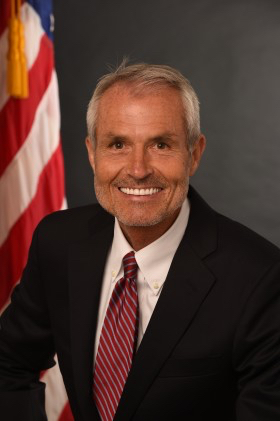The Children’s Bureau (CB), the agency that oversees most federal child welfare funding at the Department of Health and Human Services, announced a plan yesterday that could dramatically ease the process for states to take advantage of the front-end funding under the Family First Prevention Services Act – at least in the short-term.
CB Associate Commissioner Jerry Milner notified child welfare leaders that for a transitional period, states would be able to make a case for inclusion of substance abuse, mental health or in-home parenting services that were not yet officially approved under the act.
The announcement, made in a letter sent to child welfare agency leaders yesterday and obtained by Youth Services Insider, dials back some urgency around the Family First Prevention Services Clearinghouse, which is in charge of approving allowable services under the law and has been delayed in producing an initial list of services.

Jerry Milner is the associate commissioner of the Children’s Bureau. Photo courtesy of Administration for Children and Families.
“The CB plans to issue guidance allowing a state to claim transitional payments for services and associated costs under the Title IV-E prevention program until the Clearinghouse can review and rate a program or service, if a state submits sufficient documentation,” Milner said, in the letter.
The idea of the transitional payments option is very similar to a provision included in a recent Capitol Hill push to nudge more states toward Family First implementation. The Family First Transition and Support Act was introduced in late April by Sens. Debbie Stabenow (D-Mich.) and Sherrod Brown (D-Ohio); in May, the bill was introduced in the House and gained its first Republican co-sponsor, Rep. Don Bacon (Neb.)
The Family First Act was passed in February of 2018, and mostly takes effect in October of this year. It enables states to use the Title IV-E entitlement – previously reserved for foster care and adoption support – to fund services aimed at working with parents without the need for a family separation. Those services must be evidence-based and apply to three areas: parenting, substance abuse treatment and mental health interventions.
At the same time, the law restricts federal funds for the placement of foster youth in group homes and other “congregate care” options. States will only be able to draw funds for such placements for two weeks, with exceptions for programs that serve some niche populations and for accredited providers using trauma-informed, clinical models. Even in those cases, a judge will need to periodically approve the need for continued use of a congregate care facility.
Family First’s front-end services are limited to substance abuse, mental health and parenting interventions. And it is further restricted to models of services that are deemed to be promising practices or evidence-based interventions by the established clearinghouse.
As Youth Services Insider covered yesterday, the Family First Prevention Services Clearinghouse has yet to put out its first list of approved services that states can draw down funding for under the new law. Though the clearinghouse had set a goal of releasing the list in May, Milner’s letter said the new target for a first list is “in the late spring and summer of 2019.”
“I understand that some states are concerned that the Clearinghouse timeline for reviewing and rating programs may delay their ability to implement the Title IV-E prevention program,” Milner said in the letter. “In particular, states have identified prevention programs and services within their communities that are not yet slated for review by the Clearinghouse, but that the state believes would meet the evidence criteria of the Title IV-E prevention program.”
Enter the new planned guidance, under which a state agency will be able to try and demonstrate, essentially, that a model of service it wishes to use will likely be approved by the Clearinghouse.
“The guidance will specify what documentation the state must submit to demonstrate that the state conducted the independent systematic review” necessary to show the program’s impact, Milner said. “While the guidance will allow for transitional payments, the Clearinghouse will ultimately make the final determination about whether a program or service is assigned a promising, supported, or well-supported rating.”
Family First’s front-end funds and congregate care limits take effect in four months, but states are able to seek up to a two-year delay on the law. Thus far, 27 states have formally notified CB of plans to delay, but YSIis aware of at least two additional states that have an intention to delay. The most common estimate we have heard lately is that about 13 states will implement Family First in 2019, and about three dozen states will delay.
For some states, the limits on congregate care is the predominant reason to delay. For others, an existing waiver from the IV-E rules is affording them a better, more flexible funding deal than what Family First offers. But it will be interesting to see if this announcement – which opens up a path for states to seek funds for some of their own favorite services – can persuade states to move faster on Family First.
“For states with evidence-informed prevention programs and committed leadership, like Kentucky, this announcement should help accelerate the process and affirm the direction,” said Shannon Moody, child welfare policy director for Kentucky Youth Advocates. “Ideally, it will motivate states to bring forward high quality programs that are working well that the child welfare community…can learn from.”
Milner’s letter did not indicate how long the transitional permission would last, and when the list of approved services would revert back to only options cleared by the clearinghouse. It also did not make clear what office or entity would handle review of the state submissions for transition payments.
Milner’s letter said the guidance would be available “in the coming weeks.”






